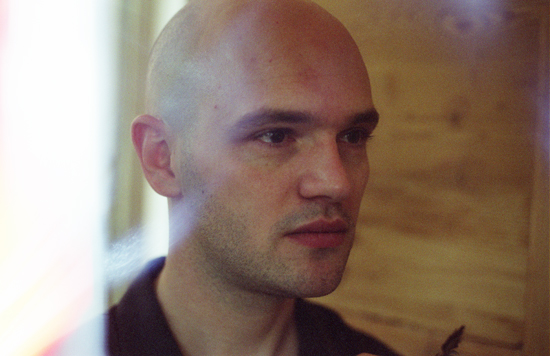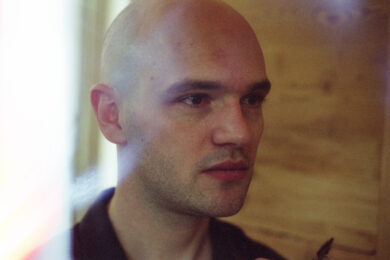It used to be that the US had the final word on the aesthetics of paranoia. From Gene Hackman’s clammy bugging expert in Francis Ford Coppola’s The Conversation to the hectic intricacies of Don Delillo and Thomas Pynchon, the American way has inspired an astonishing amount of work which hints at freak tessellations of ostensibly unconnected realms of experience. Over the last decade, however, there’s been a conspicuous spike in the UK’s interest in clandestine linkage. Iain Sinclair and David Peace, amongst others, have edged to prominence on the back of narratives about half-perceptible patterns just beneath the surface of the everyday; musically, too, the likes of Broadcast and Belbury Poly conjure an ominously interconnected vista of rural conspiracy, pagan rite, and off-limit military facilities.
Britain’s occultist turn distinguishes itself from its American counterpart in that it’s just as interested in subcultural politics as military-industrial ones. Max Schaefer’s first novel Children of the Sun sets out in similar spirit to Sinclair’s rapturous digressions in marginalia, leading its reader into the thickets of the nation’s ideological and sexual hinterland. It interweaves the stories of two characters drawn from diametrically opposed milieux: Tony – a fleshed-out version of the anonymous, tear-tattooed borstal boys that crop up periodically in Smiths lyrics – and the nervously cerebral would-be ‘creative’ James. In our viscerally memorable early encounters with Tony, which take place throughout the course of the 70s and early 80s, he’s balancing the routine of a British Movement skinhead with his necessarily closeted homosexuality. In the modern-day setting, James, shiftless and parentally-sustained, finds direction in researching a screenplay about the intersection of the far right with London’s gay scene. Hunting new leads at skinhead nights, in all-hours Berwick Street bookshops, and in online hook-up zones, he finds himself gradually becoming seduced by the neo-Nazi underground’s arcane rituals and cryptic jargon.
When James and Tony eventually meet, an event which the novel flags up as inevitable pretty much from the off, the accumulated tension dissipates into surreal, pathos-tinged anticlimax. Like Pynchon, probably an inspiration here, Schaefer understands the peculiar poetic force of irresolution, an intuitiveness that’s significant given that the work’s overarching theme is the way in which paranoia insists on connections and explanations, however improbable they may be. Children… is at its most impressive when it slides into this dreamlike register, stranding some detail or other just beyond the reach of readerly understanding. One set-piece, the young Tony’s nocturnal rendezvous with a black teenager on the towpath of a north London canal, strikes this note particularly well: it isn’t exactly amenable to paraphrase, which is never a bad thing, but raises questions as to whether the anxiety which lends it its odd colour is erotic, racial, or both. We’re not told either way, and left instead with something lingeringly weird.
Whether it’s this ghostly London or the militant right’s in-country staging areas, place is massively important here. In The Football Factory, John King’s underrated 1997 imagining of the Chelsea Headhunters’ cat and mouse battle with emerging surveillance technology, the British railway network and west London’s unremarkable suburbs were presences as weighty as any of the human characters. Schaefer likewise demonstrates the sharpened geographical consciousness that comes about when you’re forced to live beneath the radar. Soho, its gay pubs, cottaging hotspots, and skin-culture outfitters packed together cheek by jowl, is rendered with real lucidity, and the capital’s outer districts are crossed and recrossed on foot and by nightbus as if the narrative is chiselling some enigmatic pictogram into the south-eastern chalk.
In fact, this is an idea which we’re actively encouraged to entertain. The novel’s chapters are separated from one another with text and images reproduced from newspapers and xerox-manufactured fanzines: one of these is the London Psychogeographical Association’s proclamation of the discovery of a ley line linking the Royal Observatory to the home of BNP councillor Derek Beackon and the ‘omphalos of the British Empire’ on the Isle of Dogs. We’re not entirely trapped within the M25, though. For all the intensity of its metropolitan sorties, the writing is just as driven by an interest in England’s provincial unconscious. James and his partner travel to a meaningfully unidentified dormitory town to realise the BDSM fantasies of a shifty, standoffish military contractor; another pivotal scene shows Tony and his protégé Dave trek out to the Suffolk farm owned by Nick Griffin’s family to take in a gig by white power poster boys Skrewdriver.
The cultural history dimension of Children… is reason enough alone to pick it up. While the cameos of real-world figures aren’t handled with quite the same élan as Schaefer’s invented characters – Tony in particular is brilliantly imagined – useful insight is provided into the part played by the likes of Griffin in the internecine rows which have dogged the far right throughout its existence. Moreover, in an age where the mainstream media has sought to disarm the left by representing it as a toothless alliance of students and W.I. members on anti-war marches, it’s instructive to read about the tactics of groups like Anti-Fascist Action, one of whose members gives Tony a pasting, and the reader some brief, vicarious glee, during a bout of large-scale public disorder at Waterloo Station.
Perhaps the portrayal of the recent past, which never falls back on the cheap distribution of period signifiers Peace dismisses as ‘Blue Nun syndrome’, is done a little too well: on the odd occasion, Children… feels as if it’s being driven more by a historian’s priorities than by a novelist’s. This, however, can be excused in light of the breadth of the work’s ambition. Like Peace, Schaefer pushes through the obviousnesses of Britain’s late-twentieth century history to get to something considerably more unnerving, a crackle of half-decoded political resonances which remain, invisibly, instrumental in our experience of the present.



